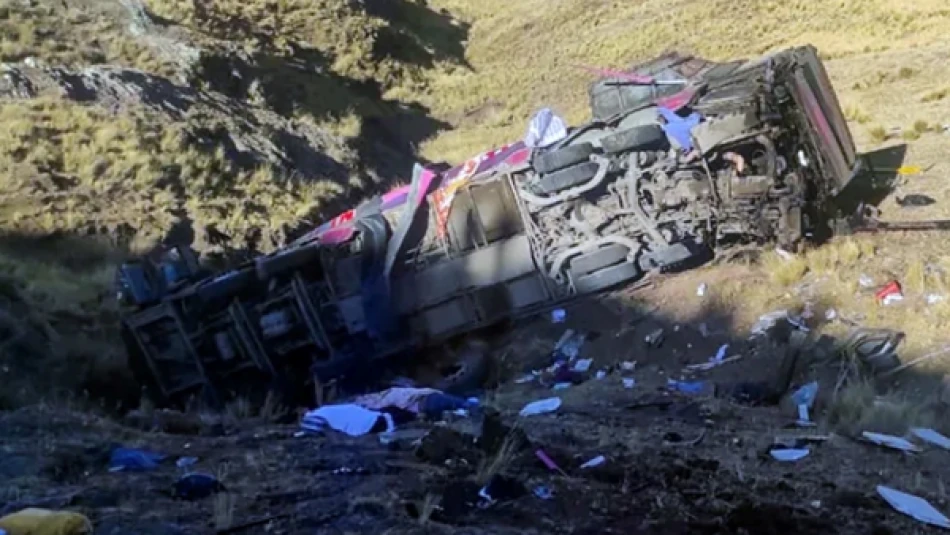
Tragic Road Accident Claims 18 Lives in Peru
Deadly Bus Crash in Peru's Andes Highlights Ongoing Transportation Safety Crisis
A devastating bus accident in Peru's Andes mountains has claimed at least 18 lives and injured 48 others, underscoring the persistent safety challenges facing public transportation in one of South America's most mountainous regions. The double-decker bus, operated by Expreso Molina Líder Internacional, veered off a highway and plunged down a steep slope while traveling from Lima to Peru's Amazon region.
The Tragic Details
The accident occurred on a highway in Palca province, within the Junín region, according to Clifor Coripaco, the area's health director. Television footage broadcast by local stations showed the bus split completely in half, with firefighters and police working frantically to rescue survivors from the wreckage.
Authorities are still investigating the cause of the crash, though preliminary reports suggest the bus lost control before careening off the mountainous roadway. The route from Lima to Peru's Amazon territories is known for its challenging terrain and sharp elevation changes.
Peru's Mountain Roads: A Persistent Danger
This latest tragedy reflects a broader pattern of transportation accidents that plague Peru's mountainous regions. The country's geography presents unique challenges for road safety, with narrow highways carved into steep Andean slopes often lacking adequate guardrails or safety infrastructure.
Infrastructure Limitations
Unlike developed nations where mountain highways feature extensive safety barriers and emergency response systems, many of Peru's inter-regional routes rely on older infrastructure that hasn't kept pace with increasing traffic volumes. The Lima-to-Amazon corridor serves as a critical commercial and passenger link, but its safety record remains concerning.
Economic Impact on Transportation Sector
Bus companies operating in Peru face mounting pressure to balance profitability with safety investments. The challenging terrain increases operational costs while competitive pricing keeps margins thin, potentially limiting funds available for vehicle maintenance and driver training programs.
For Peru's tourism and logistics sectors, such accidents damage the country's reputation as a safe travel destination. The Amazon region, increasingly popular with international visitors, depends heavily on reliable ground transportation from Lima's international airport.
Regional Context and Safety Comparisons
Peru's transportation safety record lags behind regional neighbors like Chile and Colombia, which have invested more heavily in highway infrastructure and safety regulations. While countries such as Ecuador face similar geographical challenges, Peru's accident rates remain disproportionately high.
The frequency of such incidents suggests systemic issues beyond individual driver error or mechanical failure. Weather conditions, inadequate road maintenance, and insufficient emergency response capabilities all contribute to the elevated risk profile of Peru's mountain transportation corridors.
Looking Forward: Urgent Reforms Needed
This accident will likely renew calls for stricter safety regulations and infrastructure improvements along Peru's most dangerous routes. However, the significant financial investment required for comprehensive highway upgrades means meaningful change may take years to implement.
For now, passengers traveling Peru's mountain routes face an uncomfortable reality: the country's stunning geography comes with inherent risks that current safety measures have yet to adequately address.
 Layla Al Mansoori
Layla Al Mansoori







